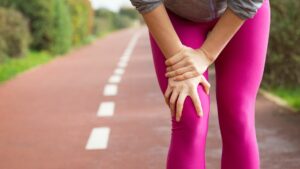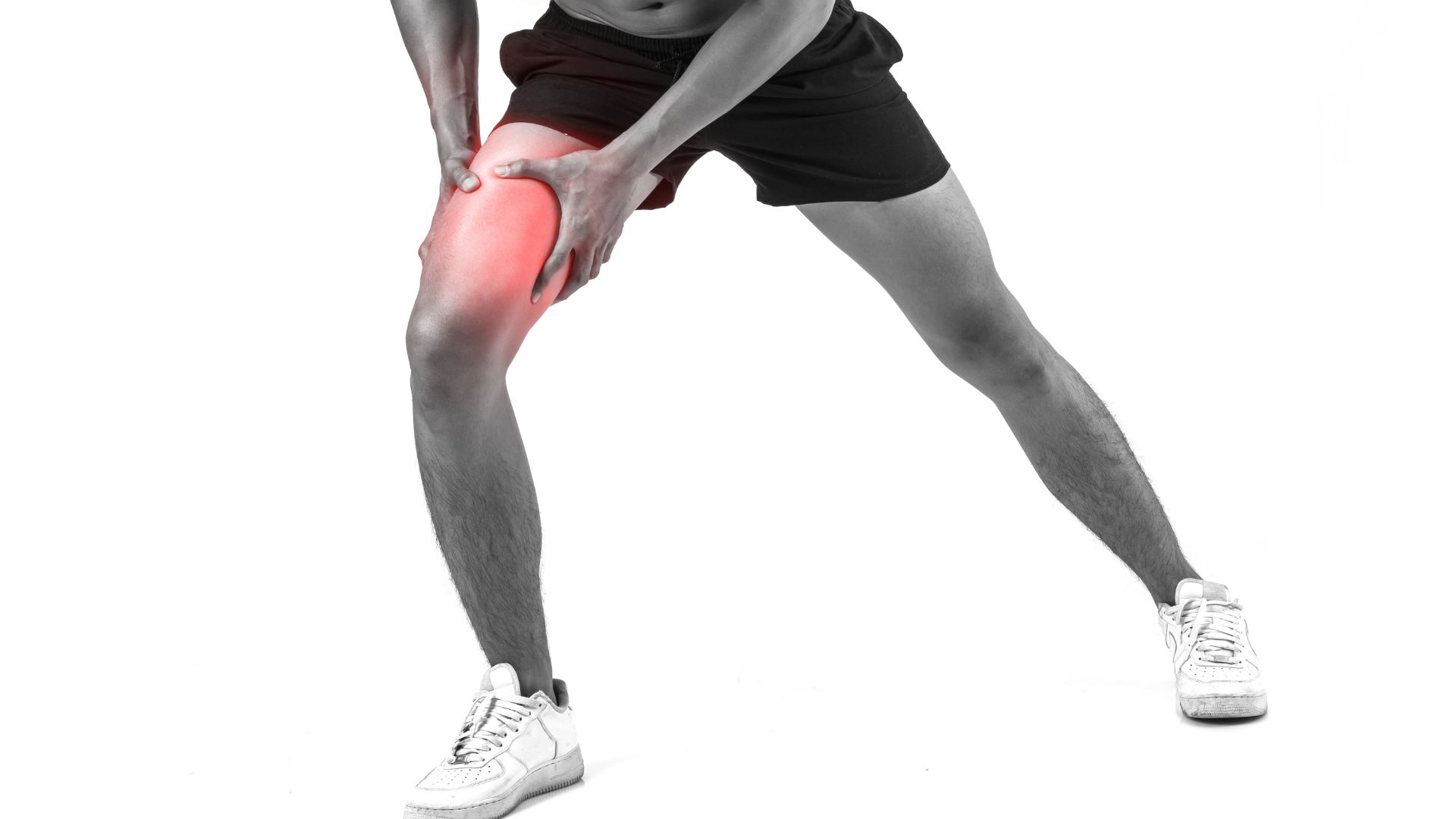You’ve just completed a challenging squat workout, and now you’re left with sore muscles the next day. Sound familiar? Many fitness enthusiasts have experienced this sensation after performing squats. But why do squats make you sore the next day? In this article, we’ll delve into the mechanisms that lead to post-squat soreness and explore strategies to mitigate this discomfort.
Squats target multiple lower body muscles, causing stress and microscopic damage that leads to muscle soreness. This delayed onset muscle soreness (DOMS) occurs 24-48 hours after exercise and is normal, especially for beginners or those increasing intensity. Eccentric contractions during squats contribute to soreness. Gradual progression, stretching, warm-up/cool-down, rest, nutrition, and hydration help alleviate soreness. Severe or prolonged pain should prompt consultation with a healthcare professional.
Because they target multiple muscle groups.
Here’s a more detailed explanation of why squats can make you sore, including the mechanisms behind delayed onset muscle soreness (DOMS), the role of eccentric contractions, and the impact on joints, ligaments, and tendons.
Squats are a compound exercise that engages multiple muscle groups in the lower body, including the quadriceps, hamstrings, glutes, and calves.
When you perform squats, these muscles are subjected to a significant amount of stress and tension. This stress leads to microscopic damage in the muscle fibers, triggering a series of physiological responses that ultimately result in muscle soreness.
Delayed onset muscle soreness (DOMS) is the soreness you experience 24 to 48 hours after exercise. It is characterized by muscle stiffness, tenderness, and discomfort.

DOMS is a Normal Response.
DOMS is a normal response of the body to the stress placed on the muscles during exercise, especially if you are not accustomed to performing squats or if you have increased the intensity or volume of your squatting routine.
The exact mechanisms of DOMS are not fully understood, but several theories have been proposed. One widely accepted theory is the mechanical theory, which suggests that the microscopic damage to muscle fibers during exercise causes an inflammatory response.
This response involves an influx of immune cells, such as neutrophils and macrophages, to the damaged area, leading to inflammation. The inflammation, in turn, triggers pain receptors, resulting in the sensation of soreness.
Eccentric contractions play a significant role in the muscle soreness experienced after squats. During squats, your muscles undergo eccentric contractions, which means they are lengthening while under tension.
For example, when you lower your body into a squat, your quadriceps and hamstrings are lengthening to control the descent.
Eccentric contractions are known to cause more muscle damage compared to concentric contractions (when the muscles are shortening), contributing to increased soreness.
The process of eccentric contractions induces high mechanical stress on the muscle fibers. This stress leads to the disruption of the regular arrangement of proteins within the muscle cells.
As a result, the muscle fibers experience microscopic tears and structural damage. These damaged muscle fibers initiate an inflammatory response and activate satellite cells, which are responsible for repairing and rebuilding the damaged muscle tissue.
The repair process leads to muscle growth and adaptation over time, but it also contributes to muscle soreness in the immediate aftermath of squats.
In addition to the muscle fibers, squats also place a considerable load on the joints, ligaments, and tendons of the lower body.
Joints, such as the knee and hip joints, are involved in supporting the body weight and facilitating movement during squats.
The ligaments, which connect bones to other bones, and the tendons, which connect muscles to bones, are responsible for stabilizing the joints and transmitting forces from the muscles.
The stress placed on these structures during squats can also contribute to post-workout soreness.
The impact on joints, ligaments, and tendons during squats can vary depending on factors such as technique, form, and load.
Poor squatting technique or excessive load can increase the stress on these structures, potentially leading to strain, sprain, or other injuries.
It is essential to maintain proper form and gradually progress in terms of weight and intensity to minimize the risk of joint and connective tissue discomfort.
To illustrate the concept, let’s consider an example:
Suppose you are new to squats and decide to incorporate them into your workout routine. During your first squat session, you perform a set of squats with proper form and gradually increase the intensity by adding weight.
As you lower your body into the squat, your quadriceps and hamstrings lengthen while under tension. The mechanical stress on these muscles leads to microscopic tears and damage to the muscle fibers.
After completing your workout, your body enters the recovery phase. Over the next 24 to 48 hours, you begin to experience muscle soreness, known as delayed onset muscle soreness (DOMS).
This soreness is a result of the inflammatory response triggered by the muscle damage during squats. The immune cells, such as neutrophils and macrophages, rush to the damaged area, causing localized inflammation and pain.
Furthermore, the eccentric nature of the squats places additional stress on the joints, ligaments, and tendons. The knee and hip joints, as well as the ligaments and tendons supporting these joints, are involved in stabilizing your body during squats.
The stress from the exercise can lead to some discomfort in these structures, contributing to the overall soreness experienced post-workout.
It’s worth noting that as your body adapts to the stress of squats, the soreness tends to diminish over time. Regularly engaging in squatting exercises allows your muscles, joints, ligaments, and tendons to adapt and become stronger, reducing the severity and duration of muscle soreness.
Alleviate soreness after squats
To alleviate soreness after squats, you can try the following methods:
- Gentle stretching: Engage in light stretching exercises to help relieve muscle tension and promote blood flow.
- Warm-up and cool-down: Prior to squatting, warm up your muscles with dynamic movements and perform a cool-down routine afterward to aid in recovery.
- Gradual progression: Increase the intensity and volume of your squatting routine gradually, allowing your muscles and connective tissues to adapt and minimize excessive soreness.
- Adequate rest and recovery: Ensure you provide your body with enough time to recover between squatting sessions. This allows your muscles to repair and adapt to the exercise stimulus.
- Proper nutrition and hydration: Consume a balanced diet with sufficient protein to support muscle repair and drink plenty of water to stay hydrated.
Here’s a table outlining recommended nutrition guidelines and examples for a balanced diet with sufficient protein and hydration:
Nutrition Component Recommendation Examples Protein Consume 0.8-1 gram of protein per kilogram of body weight per day. Chicken breast, tofu, eggs, Greek yogurt, lentils. Fruits and Vegetables Aim for 5-9 servings of fruits and vegetables per day. Apples, bananas, spinach, broccoli, bell peppers. Whole Grains Choose whole grains over refined grains for added fiber and nutrients. Brown rice, quinoa, whole wheat bread, oats. Healthy Fats Include sources of healthy fats in your diet such as avocados, nuts, and olive oil. Avocado, almonds, walnuts, olive oil. Calcium Consume adequate calcium for strong bones and teeth. Dairy products (milk, cheese, yogurt), leafy greens (kale, spinach), tofu. Hydration Drink at least 8 cups (64 ounces) of water per day, more if physically active. Water, herbal teas, infused water with fruits and herbs. It’s important to note that these recommendations can vary depending on individual needs, activity levels, and any specific dietary requirements. Consulting with a healthcare professional or registered dietitian can provide personalized guidance for your nutritional needs.
Overall, squats can make you sore due to the stress and tension placed on the muscles, leading to microscopic damage and delayed onset muscle soreness (DOMS).
Eccentric contractions during squats contribute to muscle damage and soreness, while the load on joints, ligaments, and tendons can also cause discomfort.
By understanding these mechanisms and implementing proper techniques, progression, and recovery strategies, you can effectively manage and minimize post-squat soreness.
Here’s a tabular representation summarizing the reasons, how, when, examples, and factors to consider regarding the soreness experienced after squats:
| Reason | How | When | Example | Factors to Consider |
|---|---|---|---|---|
| Targeting Multiple Muscle Groups | Squats stress and tension on quadriceps, hamstrings, glutes, and calves. | During and after performing squats. | Performing barbell squats with proper form and full range of motion. | Proper technique and form are crucial to target the intended muscle groups effectively. |
| Microscopic Muscle Damage | The stress on muscle fibers during squats causes microscopic tears and damage. | 24 to 48 hours after exercise. | Feeling muscle stiffness and tenderness after performing squats. | Gradually increasing intensity or volume can help the muscles adapt and minimize excessive damage. |
| Eccentric Contractions | Squats involve lengthening of muscles under tension, causing more muscle damage. | During the lowering phase of the squat movement. | Lowering the body into a squat position with controlled eccentric contractions. | Eccentric movements are effective for building strength but can also contribute to muscle soreness. |
| Load on Joints, Ligaments, and Tendons | Squats place a significant load on the joints, ligaments, and tendons of the lower body. | During and after performing squats. | Feeling discomfort or strain in the knees, hips, or other joint areas. | Proper form, technique, and gradual progression can help reduce stress on these structures and minimize the risk of injuries. |
| Alleviating Soreness | Gentle stretching, warm-up/cool-down routines, gradual progression, adequate rest, proper nutrition, and hydration. | Before and after performing squats. | Incorporating dynamic stretching exercises and allowing sufficient recovery time between workouts. | Individual factors such as age, fitness level, and overall health can influence the effectiveness of these strategies. |
| Seeking Medical Advice | Severe or prolonged pain that persists beyond normal DOMS. | When experiencing persistent or debilitating pain. | If the soreness is accompanied by other symptoms or affects daily activities. | Consulting a healthcare professional can help rule out underlying injuries or conditions. |
It’s important to note that the table provides a general overview, and individual experiences and factors may vary.
Conclusion.
In conclusion, squats can make you sore the next day due to the stress and tension placed on multiple muscle groups in your lower body.
This leads to microscopic damage in the muscle fibers, resulting in delayed onset muscle soreness (DOMS).
The eccentric contractions involved in squats, along with the load placed on joints, ligaments, and tendons, contribute to post-workout soreness.
However, with regular squatting exercises, your body can adapt and become more resilient, reducing the severity and duration of muscle soreness over time. Incorporating gentle stretching, proper warm-up and cool-down routines, gradual progression, adequate rest and recovery, and maintaining a balanced diet can help alleviate soreness and support muscle repair.
If you experience severe or prolonged pain, it’s important to seek medical advice to rule out any underlying injuries or conditions.
By understanding the factors contributing to post-squat soreness and implementing appropriate strategies, you can effectively manage and minimize discomfort while reaping the benefits of squats for strength and muscle development.

Hey there, it’s Mike Rrsq, the Editor-in-Chief over at Jsquat.com, and I’m absolutely obsessed with all things squat fitness! I’ve been lucky enough to get some serious recognition for my work in this field. With a solid background in the fitness and wellness industry, I’ve been there right from the get-go, helping shape this website into what it is today.
You see, I’m not just the boss around here; I’m also a passionate contributor. I love sharing my insights through my articles, and trust me, they’re not your run-of-the-mill stuff. Each piece I write is a labor of love, filled with my expertise and real-world experience in the fitness universe. So, if you’re into fitness and looking for some inspiration, you’re in the right place!

